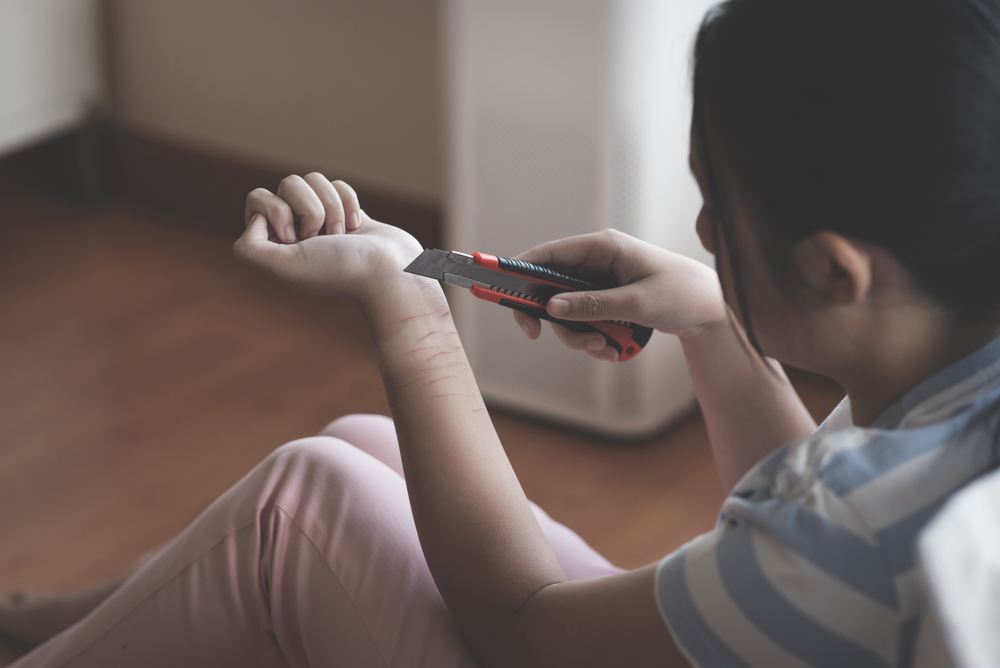Self-harm, also known as self-mutilation or self-injury, refers to the non-suicidal act of deliberately harming one’s own body as a way of coping with strong feelings (e.g., emotional pain, intense anger, frustration, etc.). Self-harm occurs most often in teenagers and young adults. Recent data indicates rates ranging from 6 to 14 percent of adolescent boys and 17 to 30 percent of girls engage in self-injury. There are different forms of self-harming that can occur on any area of one’s body, but it is most frequently seen on the arms, legs, and/ or front of the torso. The Mayo Clinic provides a comprehensive list of reported self-harming methods, some of which include the following examples:
- Scratching.
- Carving and/ or branding one’s skin.
- Hitting oneself.
- Burning.
- Ingesting poison.
- Cutting.
- Inserting foreign objects under the skin and/ or into one’s body.
- Head banging.
- Pulling hair out.
- Getting excessive body piercings.
- Picking scabs to prevent wounds from healing.
- Jumping in front of vehicles and/ or from high places.
- Overdosing on drugs and/ or medication.
Recent studies have found that one-third to one-half of adolescents in the United States have engaged in some type of non-suicidal self-injury, although some studies put the rate at 13 to 23 percent. Self-harm is not a mental illness, but a behavior that indicates a need for better coping skills.
Focus On Mental Health
Mental health refers to emotional, cognitive, and behavioral wellbeing. The World Health Organization (WHO) explains mental health as “a state of well-being in which the individual realizes his or her own abilities, can cope with the normal stresses of life, can work productively and fruitfully, and is able to make a contribution to his or her community.” Wellness is an active and dynamic process of change and growth to reach one’s fullest potential and strives to enhance overall wellbeing. According to The National Wellness Institute, wellness is a “process through which people become aware of, and make choices toward, a more successful existence.” Prioritizing mental health, by engaging in good behavioral health practices, can help teenagers cultivate and refine an armory of healthy and effective coping strategies. Positive behavioral health allows young people to work more productively, cope with everyday stress more effectively, maintain a positive outlook, engage in healthy eating, sleeping, and exercise habits, and enhance one’s quality of life.
For Information and Support
Every family in need of mental health treatment must select a program that will best suit the needs of their family. When one member of a family struggles, it impacts everyone in the family unit. To maximize the benefits of treatment we work closely with the entire family to ensure that everyone is receiving the support they need through these difficult times.
Seeking help is never easy, but you are not alone! If you or someone you know needs mental health treatment, we strongly encourage you to reach out for help as quickly as possible. It is not uncommon for many mental health difficulties to impact a person’s life, long term. Pursuing support at the beginning of one’s journey can put the individual in the best position to learn how to manage themselves in a healthy way so they can go on to live happy and fulfilling lives.
OUR KNOWLEDGEABLE ADMISSIONS TEAM CAN BE REACHED 24/7 AT INFO@PACIFICRTC.COM OR CALL: Phone Number,800-531-5769






